
Bac Kan
How to travel to Bac Kan for your best experience
Bac KanTravel Guide – What to do, when to visit, and more…
Situated about 250km from Hanoi, Bac Kan (aka Bac Can) is rich in natural resources and cultural ethnic identity of northeastern Vietnam. As home to Tay, Dau, H’mong and Nung peoples, who continue to maintain their traditional lifestyles and survive by fishing and agriculturing for centuries, Bac Kan is endowed with many potential for socio-economic development with abundant forests, lakes, caves and waterfalls. If you are a traveler who prefers to discover the natural mighty sightseeing and meet the ethnic people in the minority groups, Bac Kan is an ideal destination for you to travel. But before doing so, let’s take some tips from this article on how to travel to Bac Kan for your best experience.
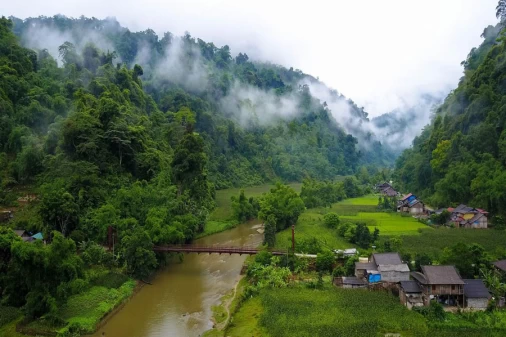
Ba Be
How to travel to Ba Be for your best experience Ba Be Travel Guide 2020 – What to do, when to visit,...
Frequently asked questions
Situated about 250km from Hanoi, Bac Kan (aka Bac Can) is rich in natural resources and cultural ethnic identity of northeastern Vietnam. As home to Tay, Dau, H’mong and Nung peoples, who continue to maintain their traditional lifestyles and survive by fishing and agriculturing for centuries, Bac Kan is endowed with many potential for socio-economic development with abundant forests, lakes, caves and waterfalls.
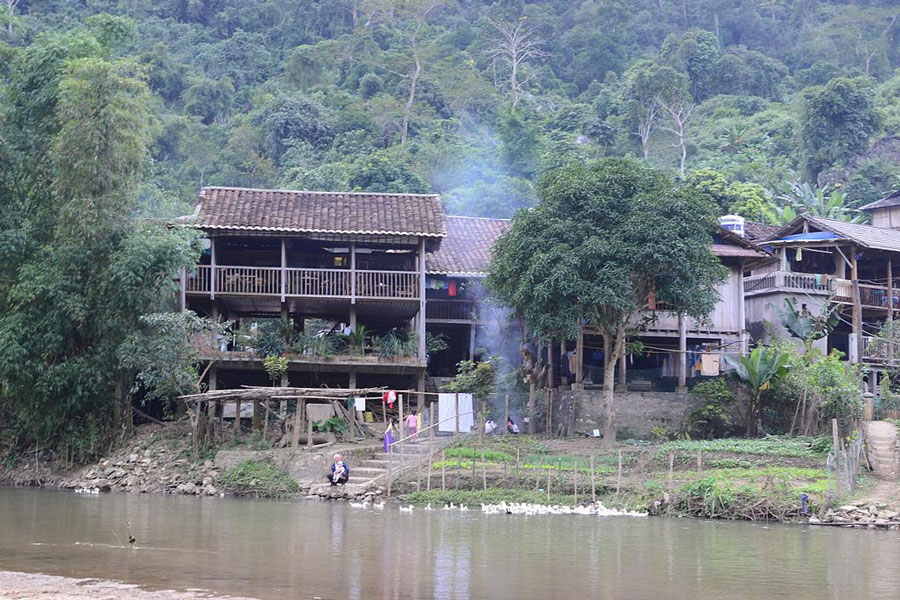
If you are a traveler who prefers to discover the natural mighty sightseeing and meet the ethnic people in the minority groups, Bac Kan is an ideal destination for you to travel. But before doing so, let’s take some tips from this article on how to travel to Bac Kan for your best experience
1. Trekking across the Ba Be National Park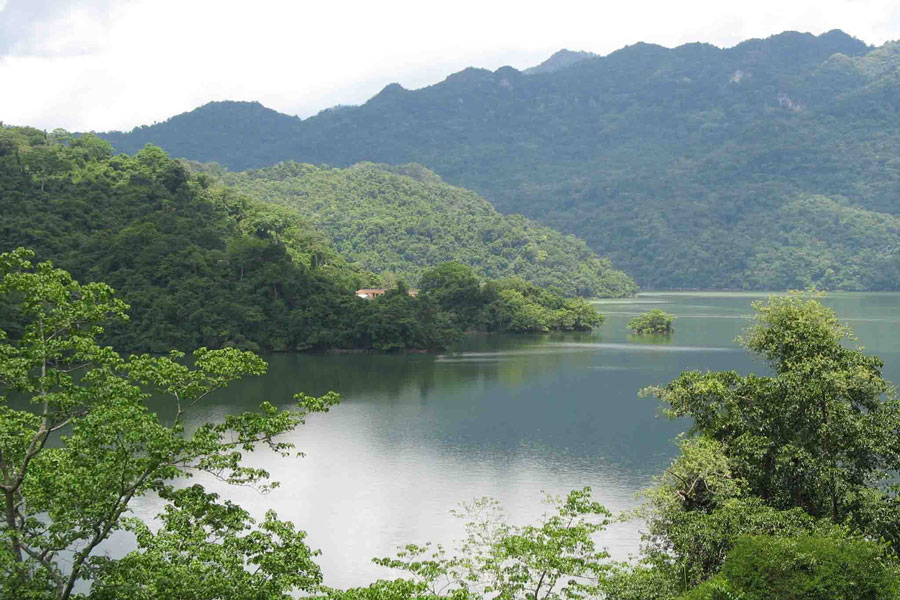
As a largely part of Bac Kan Province, Ba Be National Park is the epitome of wild and untamed nature. The park is made up of rich tropical forests centered around a large natural freshwater lake and soaring limestone karsts laced with caves and grottoes. This variation offers fantastic opportunities for exploration from boat trips to kayaking, caving, trekking, and cycling. Thanks to its diverse biodiversity and its ideal eco-tourist nature, Ba Be National Park was recognized as a Natural Heritage of ASEAN in 2004 and is also praised as the ‘Pearl of Northeast Vietnam’ by locals.
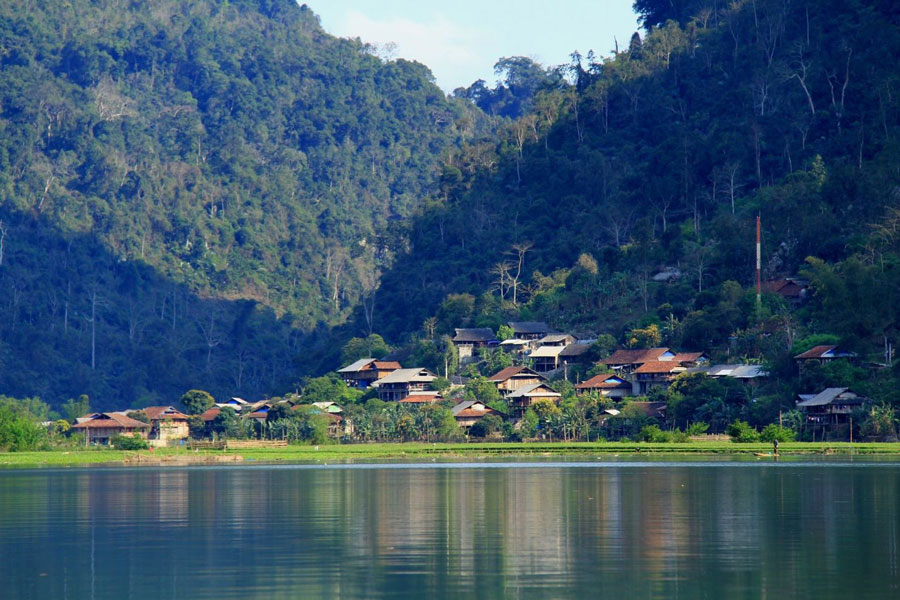
The whole district is dominated by the Pia Booc Mountain range rising to a height of 1,500m. It is the combination of scenery, from the karst outcrops clad in rich vegetation to the paddy fields carpeting the lower slopes of the mountains, with a wide variety of flora and fauna, along with the rich cultural diversity which together makes this a unique and rewarding location. Climbing over the mountain and trekking along the trail, you will have a chance to explore and experience the close-to-nature life more than ever.
Along with the stunning scenery, Ba Be is the perfect place to discover some of the ethnic minority communities in Vietnam, which are mostly Tay plus smaller numbers of Dzao and Hmong. They retained their old way of life, living in traditional houses and relying heavily on fishing and agriculture. For those who expect a perfect vacation full of outdoor adventures and cultural experience in Vietnam, Ba Be is where you head to.
2. Boating throughout the Ba Be Lake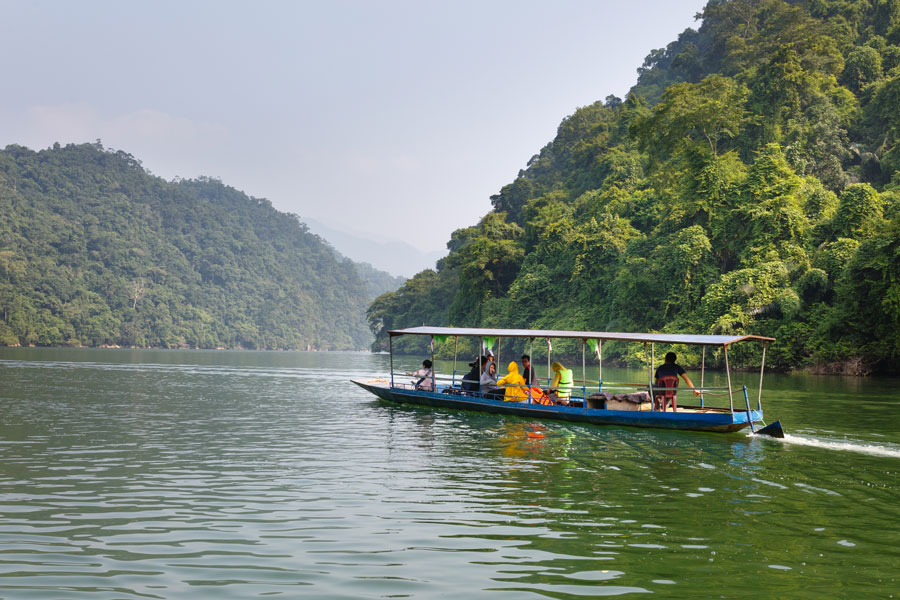
Located in the center of Ba Be National Park, at the height of 178 m above sea level, with a length up to 8km and a width of 500m. Ba Be Lake is the largest and highest natural freshwater lake in Vietnam. Surrounding the lake are majestic limestone mountains imprinted on a flat lake, poetic like “Ha Long Bay on the mountain”. From that view, Ba Be Lake is like a picture of water wearing, captivating tourists who come to visit.
Ba Be actually comprises three lakes: Pe Lam, Pe Lu, and Pe Leng (a name Ba Be means Three Lakes in English). And one of the best ways to experience the incredible beauty of Ba Be is from the water, as you can take a boat trip or kayaking yourself from Nang Riverhead following along the waterway to explore the rivers, lakes, and caves that makeup Ba Be highlights.
3. Visit cave to cave
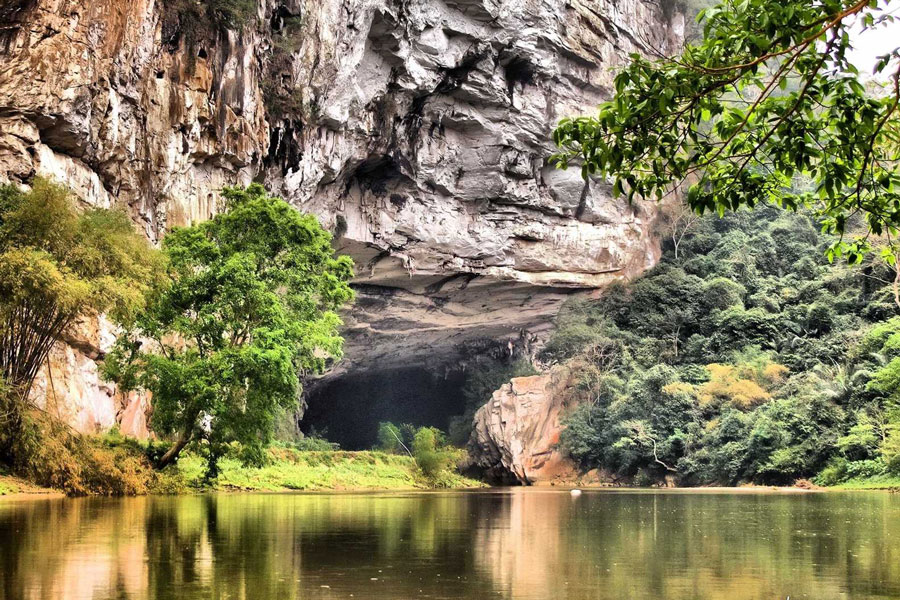
Puong Cave: The cave welcomes you with an impressive entrance of a 30m high white limestone gate, only accessible by waterway. Inside, Puong Cave is 300m long, features colorful stalactites in all shapes and sizes. Visit Puong Cave, you can witness the story of how the Nang River erodes, breaking through the other side of the mountain over the years. This cave is edgy, imposing yet at the same time gentle with a great lookout to the river.
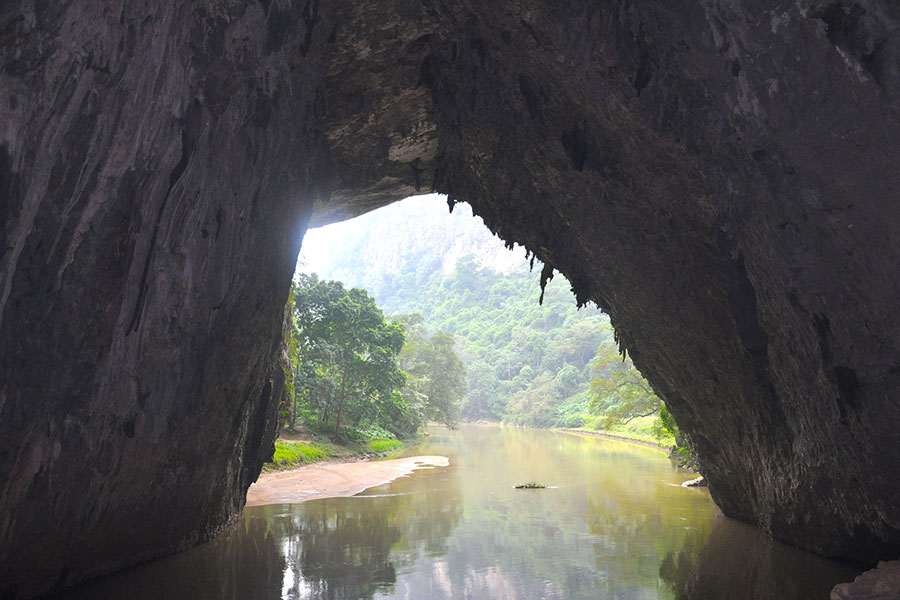
Hua Ma Cave: A cave which is famous for its stunning beauty and a fascinating backstory. Its name means horse head and there is a haunting tale behind. Though this tale kept many locals away from this cave for years, if you are brave enough to enter the cave, you will be rewarded with stunning views of rock formations. As you ascend into the dark recesses of the cave you are met with an otherworldly melee of stalactites and stalagmites which appear to morph into different objects as you pass by.
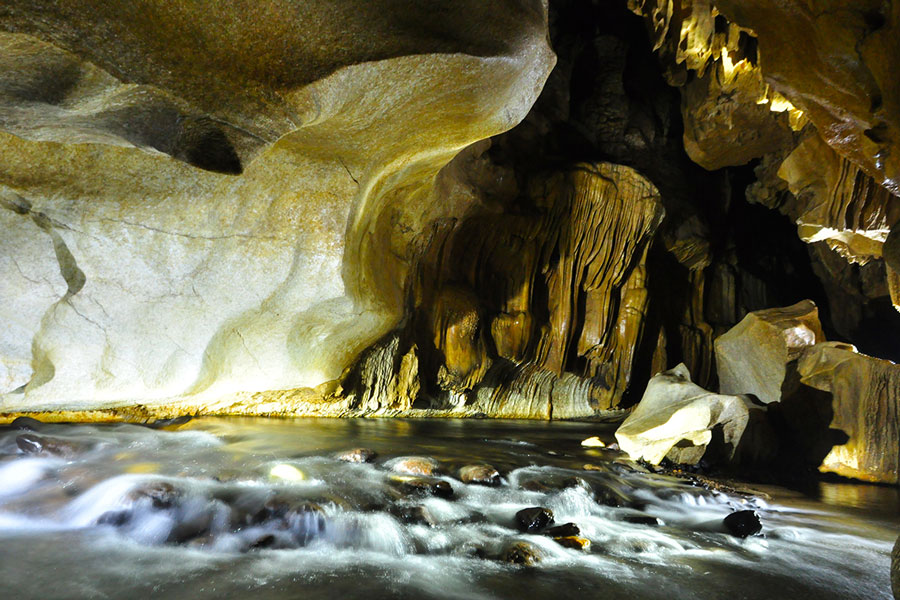
Lo Mo Cave: Newly discovered, the karst cavern follows an underground river for around 3,000m. In the dark recesses of the cave, stalagmites and stalactites cut through the cool air, some reaching up to 40 meters in height. The towering columns shimmer in the lights used to light the way and cast shadows which appear to morph seamlessly from one thing to the next. The cave is also a flourishing ecosystem, providing a habitat for some rare species of flora and fauna.
4. Hiking village to village
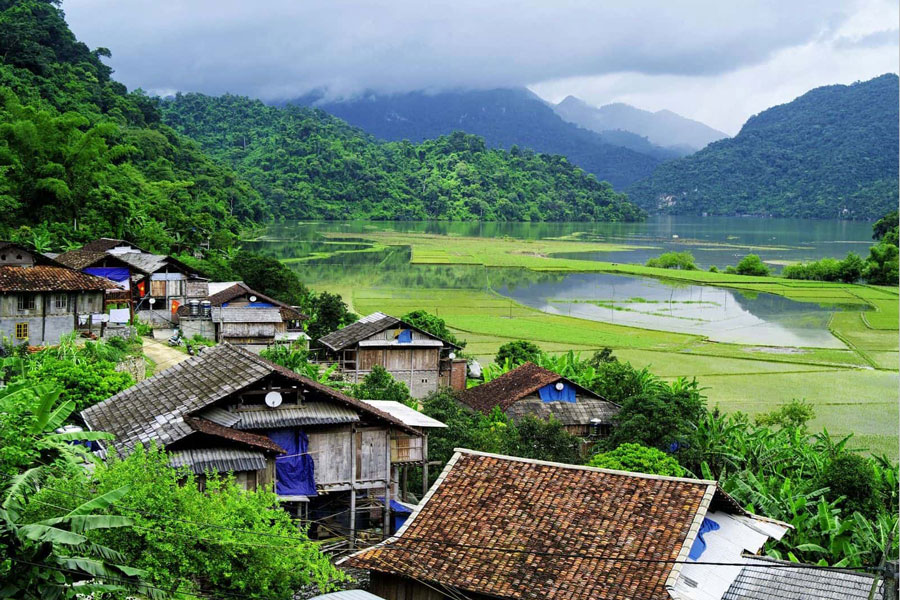
Pac Ngoi Village: A nice and poetic village of local Tay ethnic group, overviewing Ba Be lakes, farming fields, and tropical forest. Visiting Ba Be will be a big miss if you do not pay a visit to Pac Ngoi village. Pac Ngoi village is one of the few villages that still preserve the traditional customs and habits of the Tay ethnic. Coming to Pac Ngoi village, visitors can not only immerse themselves in the beautiful natural scenery but also discover and experience interesting things in the daily life of the community here.
Ancient stilt houses with ages of tens to hundreds of years are always preserved and embellished as a testament to the Tay culture’s typical culture. By home staying with locals, you get to know the local culture and tasting authentic local dishes cooked by the host. In the morning, it is a peace of mind to sit on the balcony overlooking the lake, enjoy a cup of coffee, look at people working in the field and hear the birds singing.
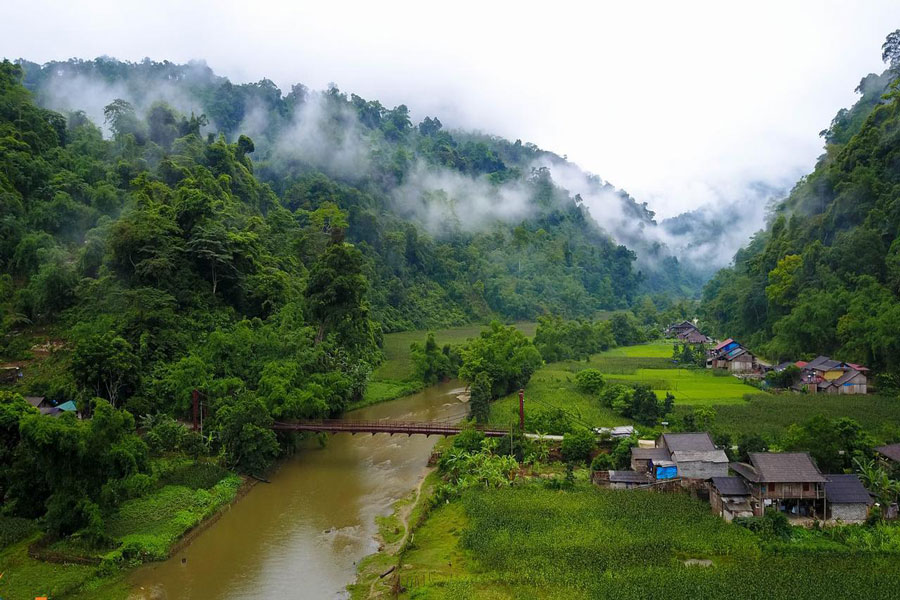
Na Nghe Village: If you want to experience the life of traditional Dzao people, get here. This Dzao village is small but worth visiting once you venture into the forests. You will be encompassed by nature sounds and breathtaking signs of the valley beneath the village. Not only that, but you will also be rewarded with stunning views of the valley and friendly and welcoming local people. You can eat, sleep and have herbal baths like a true local. The Dzao people use herbs not just for cleansing and bathing but it can help reduce stress, soothe the skin and muscles and draw out infection.
5. Get wet at Dau Dang Waterfall
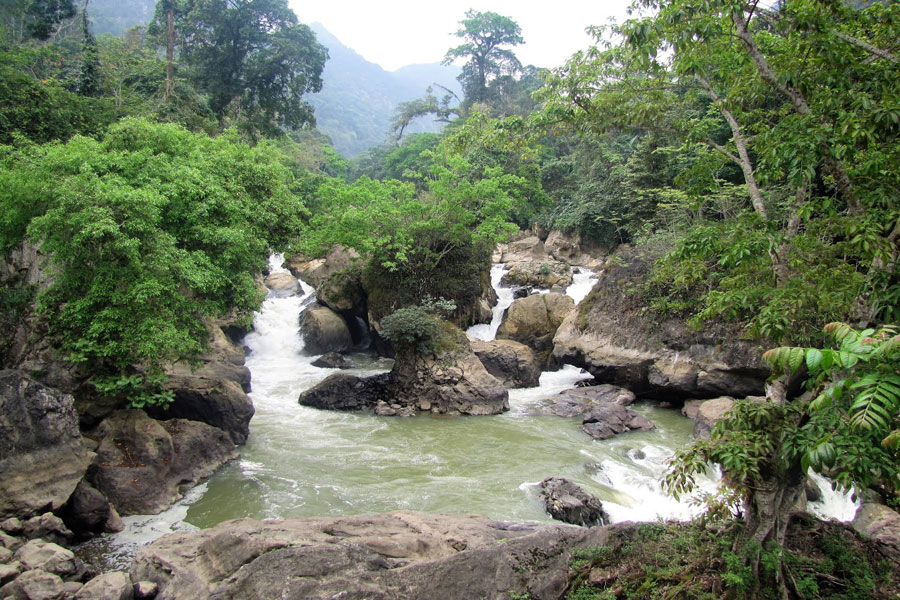
Located on the far west side of the river, the fall lies between two karst formations, set in three tiers of huge rocks up and down and thick foliage of the forest. The fall is not wide enough so the water flow here is bottled up, creating such a misty sight of nature. Large boulders topped with erratic plantlife block the Nang River creating a flowing cascade. Here the water turns from green to white as it crashes off the rocks. As well as waterfalls, you may also have the chance to spot the rare Ca Chien fish that inhabit the waters, some of which can grow up to 10kg in size.
6. Swim at Fairy Pond
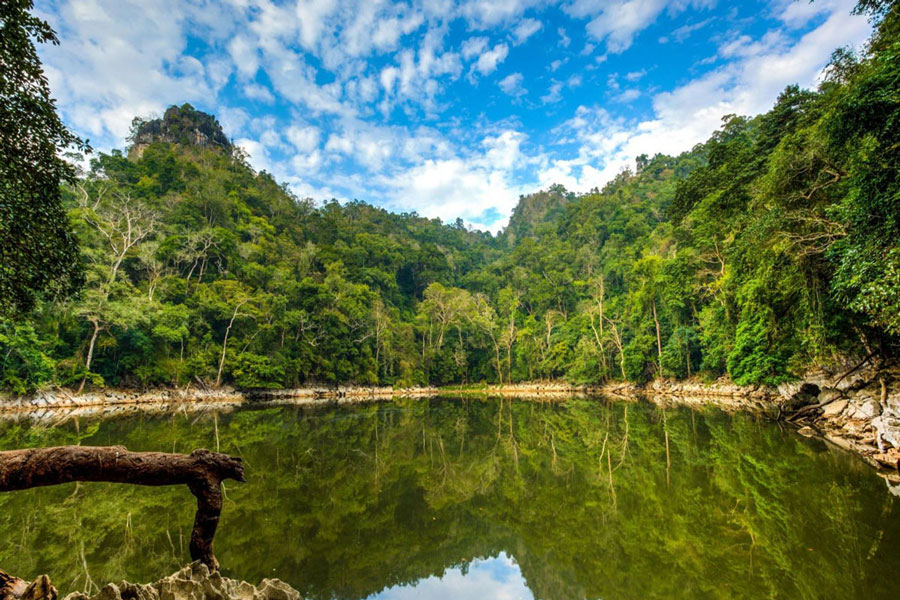
When your kayak begins to come into the first lake of Ba Be, you’ll see the Fairy Pond right on your left. To get there, you’ll have to walk on land. The pond is neatly nestled in the mountains, so clean and remote the only things you can see there are either wildlife or local fishermen. The name of the lake, like those of many other streams and waterfalls in Vietnam, was after a story of a local hunter when passing by the pond catching the sight of the fairies swimming here. And the beauties of the pond to explain the taste of the fairies in choosing a bathing place.
7. Visit An Ma Temple
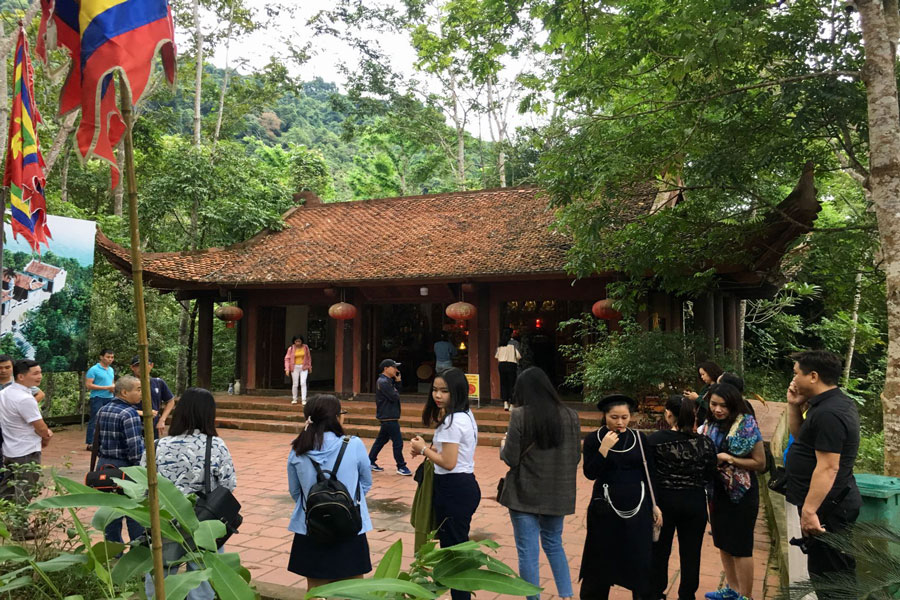
When you enter the second lake, An Ma Island is located right at the center of the lake, inviting you to explore its tangle of rocks, roots, and branches. The large chunk of rock topped with a thick green forest has an air of mystery surrounding it as it sits alone in the middle of the lake. The island was believed as the living place of the widow and the son after rescuing Nam Mau villagers. When the widow died, the people built An Ma temple to worship and remember her good deeds. This is the place for you to bathe in the relaxing atmosphere and learn about the religion and rituals of the local people.
8. Visit Thach Long Pagoda
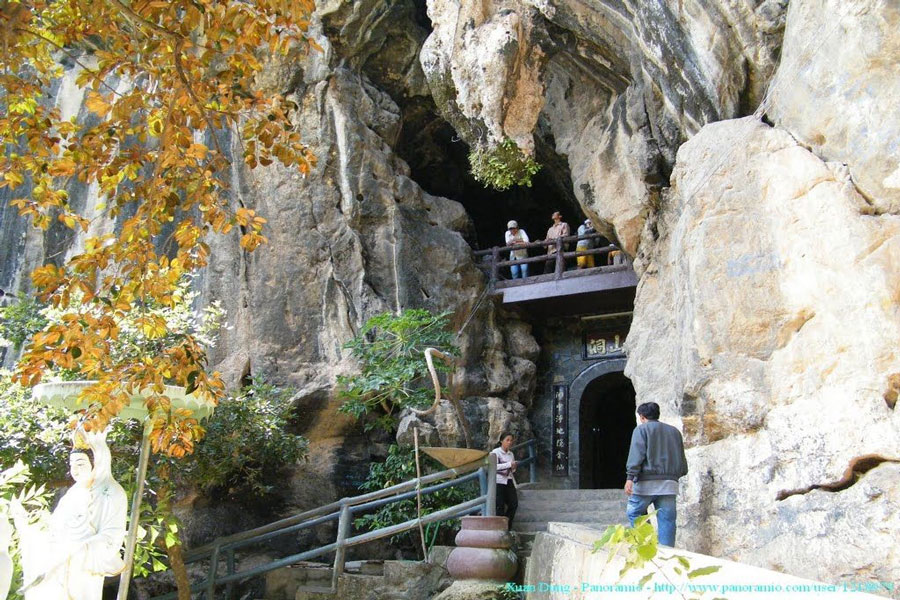
Thach Long (or Stone Dragon) Pagoda is located inside a large stone grotto of Thach Long Mountain. Dating back to the 19th century, Thach Long Pagoda was the fortress to defeat the Tong enemy in the Ly Dynasty. In the war against French colonialism, the pagoda became a weapon producing place and storage and the people stopped worshipping the pagoda. In 1949-1950, Great President Ho Chi Minh visited the pagoda three times and in 1950 he stayed here for one night. In 1954, the pagoda became the Bac Thai Weapon Transport Station until peace was re-established.
9. Experience the local festive events
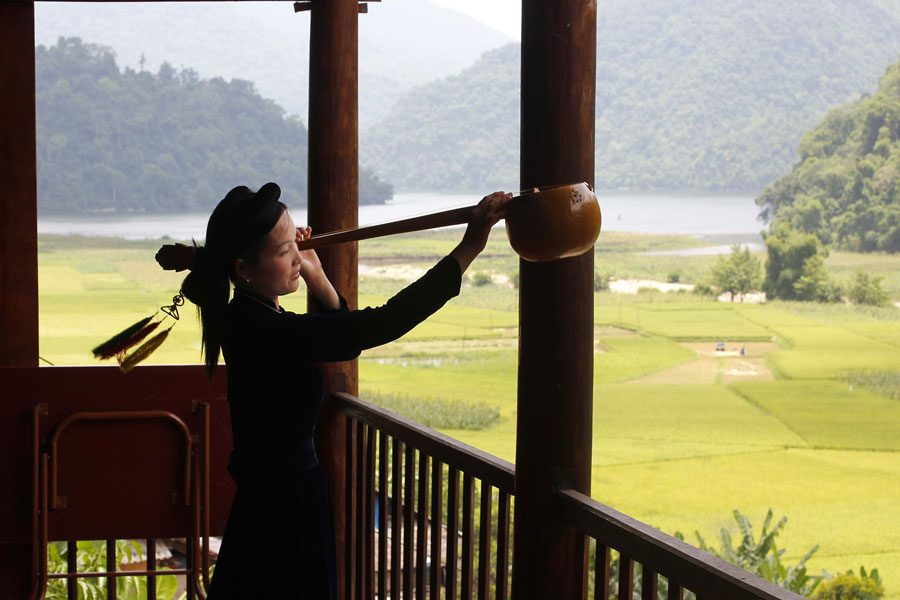
Then Singing: As a unique folklore art of Tay, Nung and Thai groups in northern Vietnam, also the remarkable cultural activity in Bac Kan, ‘Then Singing’ refers to the singing of God’s melodies, and is viewed as having an important value in the life of the people here (‘Then’ means ‘God’). At the performance, young Tay women will wear their traditional black dress and sing along with ‘Dan Tinh’, the musical instrument playing. Then Singing is dedicated to God in the wishes of the people for peace, good harvest, and prosperity.
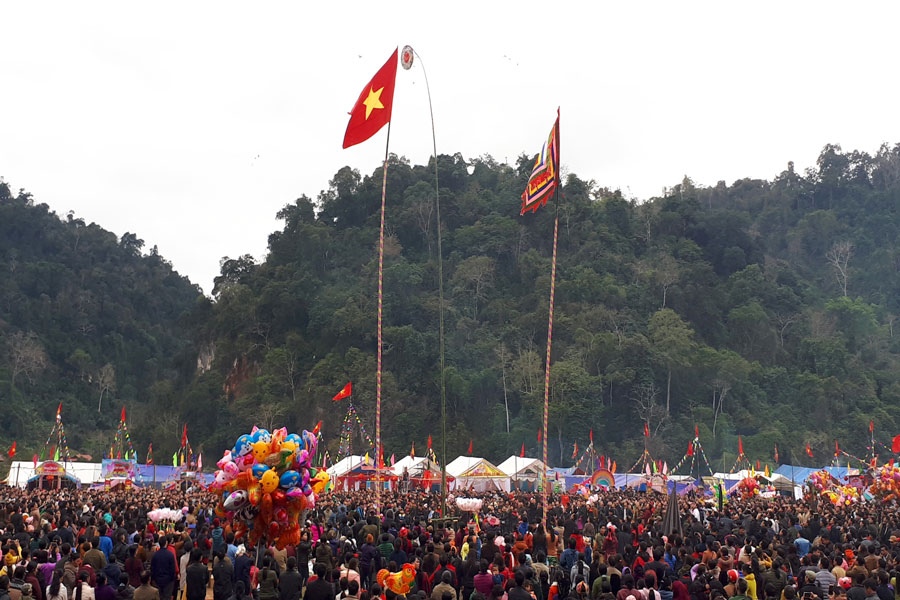
Long Tong Festival: A famous festival in Ba Be, which is a massive celebration to honor the new lunar year’s initial rice crop. During the lunar month’s 9th and 10th days, inhabitants from every ethnic minority community will embark on the banks of the river, each person dressed in their best conventional attire. The vibrant colors of the embroidered fashion, the flapping flags, and the custom decor will liven up the area with a festive feeling. Each field is stuffed with kiosks selling native dishes to eat, which you will be allured to with their aromas.
The festival showcases conventional rituals, including formal offerings of fruits and vegetables to the gods for the sake of praying for a prosperous year. As one of the largest social gatherings of the year, friends reunite with one another having fun reminiscing and participating in enjoyable activities. You will notice an array of popular games, dancing, and music at the outing, with each patron having fun with the festive ambiance. The mesmerizing back of the lake and mountains add beauty to these celebrations. As night falls, the event is adorned with floating, fragile flower lanterns and a fuming bonfire to keep the inhabitants warm.
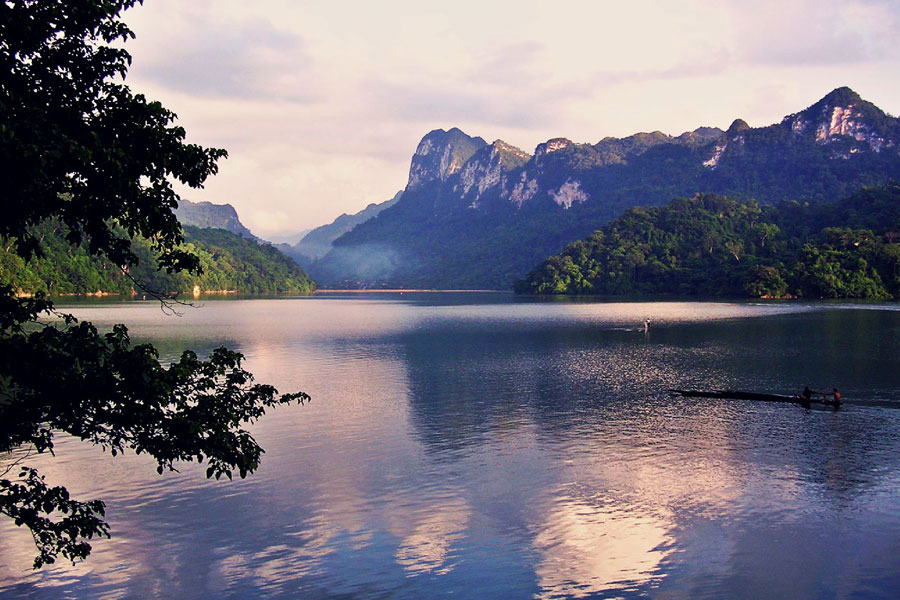
An Ma Temple Festival: From the rebuilding of An Ma temple in 2006, an annual festival is held to honor many historical and religious figures together with the widow in the Ba Be Lake’s legend, on the 6th day of the second month of the lunar year. Come to An Ma islet at this time of year, not only you can see the cultural practice of local people here but also enjoy the beautiful natural landscape on the islet.
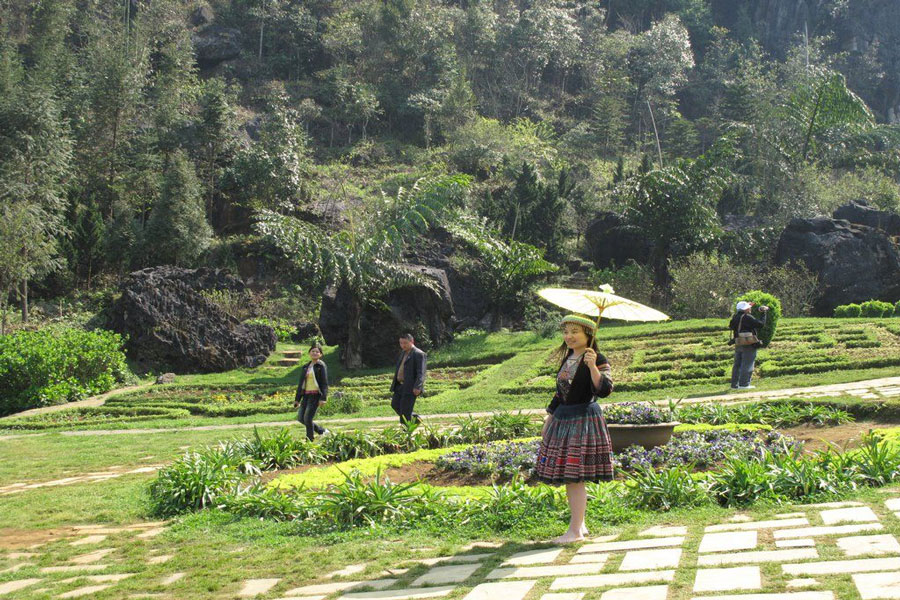
Xuan Duong Love Market: This love market only gathers once a year, on the 25th day of the third month of the lunar new year at Xuan Duong Commune, Na Ry District. Often compared to the love markets of Ha Giang and Sapa, Xuan Duong Love Market is distinctive in its own rights. The people who participate in this love market are ethnic people from local Tay and Nung groups and surrounding areas. Originated from a touching story of a young Tay couple who loved each other but were separated due to bad fate, the Love Market is an event where couples who couldn’t get married can come and see each other.
Because of Bac Kan’s favorable farming and fishing conditions, the food found here is varied and fresh. From locally grown vegetables to free-range meat and fish from the lakes and rivers, the feasts you will enjoy with your hosts are sure to leave you wanting more.
Grilled fish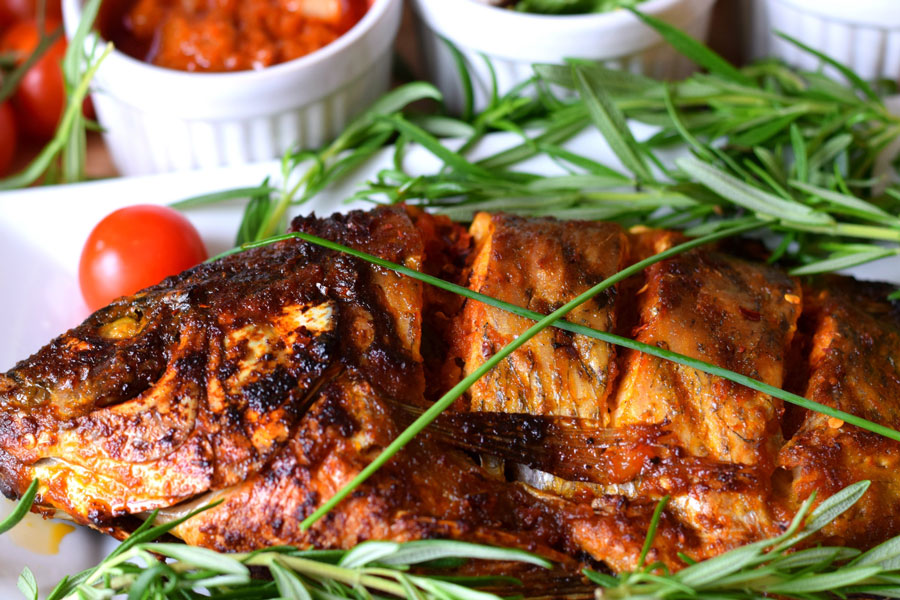
People catch fresh fish by hand or by simple tools from Ba Be lake, then some bake them with alcohol while others use a charcoal stove. This food is like Tay people’s daily snacks. They often eat the meat from the fish with a little chilli and sip corn wine or beer.
Arrowroot vermicelli of Bac Kan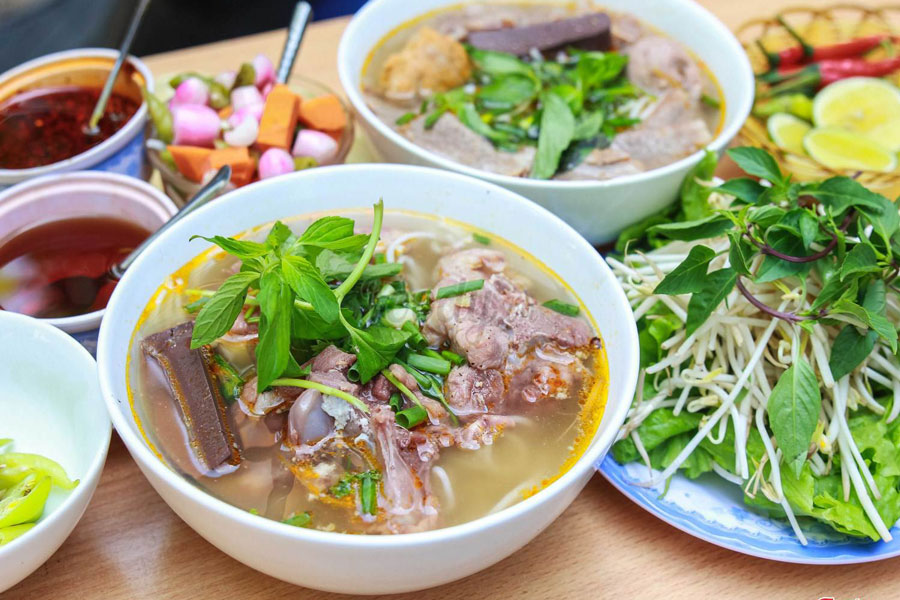
Also called Mien dong Bac Kan, this dish is made of pure starch from arrowroot tubers, and finished Mien dong fibres are grayish (the colour of arrowroot’s sap). During the processing of non-chemical bleaching and dyeing, the noodle fibres keep the colour of arrowroot vermicelli noodles. Mien dong is produced by traditional experience of ethnic people so its fibres are leathery and have a specific aroma. Vermicelli fibres are not loose and are crushed after cooking and cooling.
Bamboo-tube rice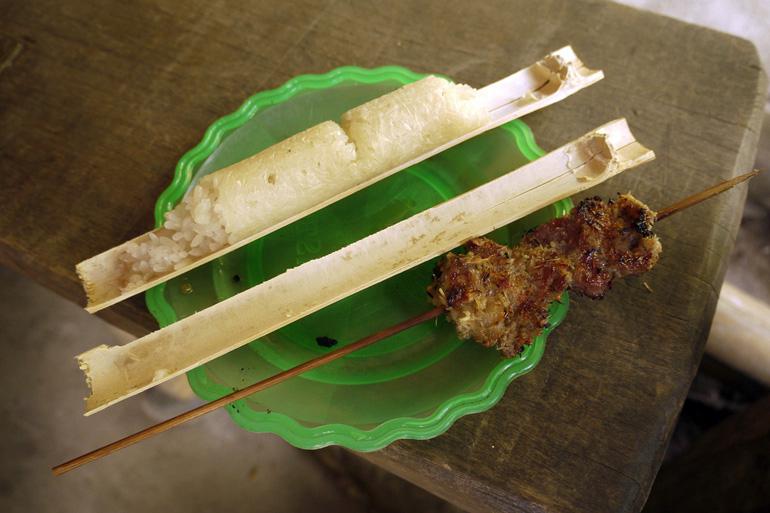
It is a very typical dish of every ethnic minority in Vietnam. Of course, the main ingredient is rice which is put into a fresh and young bamboo with enough water. In order to make the rice more pleasant, people will add a little coconut water. Then, they will use banana leaves to wrap the tube and burn the bamboo tube on fire until it smells good and is ready to be served.
Pork hanging on the kitchen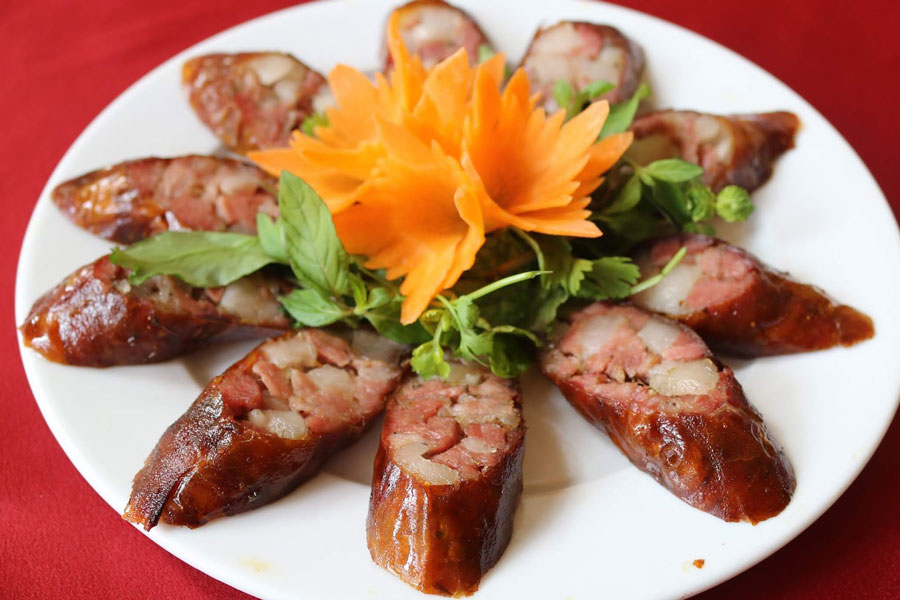
It is a very unique delicacy of the Tay people here. The pork is sliced into small pieces, then it is rubbed with rice wine, water, and salt. People will leave the meat for 3 or 4 days before smoking it in the wood stoves. The food is ready to eat when you see a yellow-black color on the pork’s skin.
Shan Tuyet Tea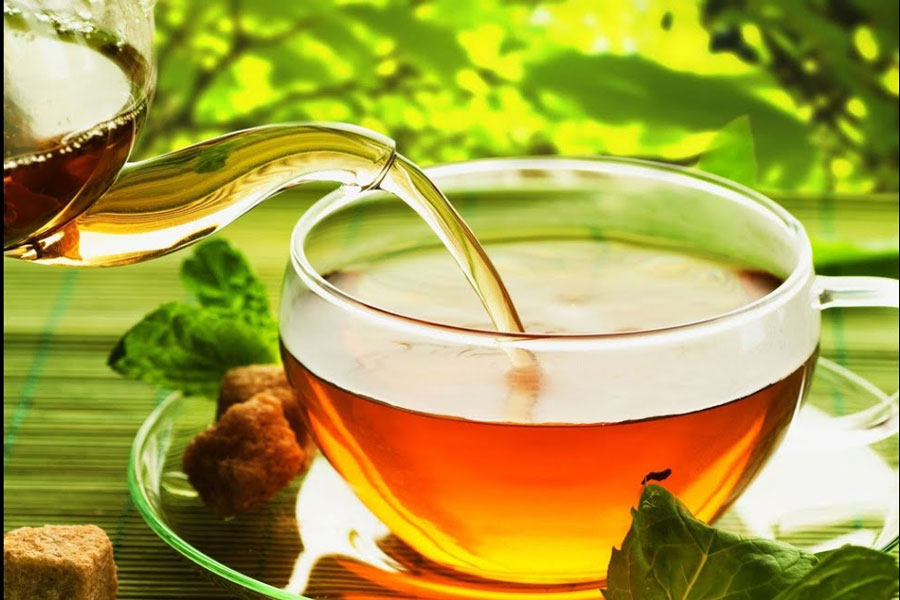
Shan Tuyet tea is grown at an altitude of 1,200 m above sea level in cool climate all year around. Unlike other kinds of tea, Shan Tuyet tender tea leaves are large and covered with a layer of white fuzz that look like snowflakes. When being dried, the tender tea leaves are silver white and when making tea, its water is shaken yellow with strong flavour.
For most tourists, we often suggest a 2-day & 1-night itinerary, which includes various outdoor activities, for your best experience while traveling Bac Kan .
Day 1: Ba Be arrival – Nang River – Puong Cave – An Ma Island – Pac Ngoi Village
Depart early from Hanoi and arrive Be Be, Bac Kan at noon. Spend the afternoon taking a boat ride along the Nang River, visiting the Puong cave and exploring tiny An Ma Island. After the sun has set, settle into your homestay in Pac Ngoi village and eat dinner with your localhost, enjoying home-cooked specialties.
Day 2: Dau Dang Waterfall – Ba Be departure
Wake up early for a classic homestay breakfast before making your way to Dau Dang waterfall. Enjoy sightseeing, swimming and have lunch on the spot. Then prepare to head back to Hanoi.
If you are a veteran backpacker, please feel free to manage the trip on your own and alter it when needed, else, we recommend you join a tour organized by a professional company that can free you from hassles and keep you safe throughout the journey.
Bac Kan is indeed an ideal destination that offers different charms at various times of the year. During Fall, from August to October, the weather is not too hot and the temperature falls between 25-27 degrees Celsius, which is perfect for trekking, bicycling and caving. This is also the time when the rice fields in Bac Kan turn golden and are ready for harvest. You will be delighted watching this scene.

Alternatively, you can visit Bac Kan in the early months of the year to witness its unique, local traditional festive events like Long Tong festival, An Ma Temple festival, and Xuan Duong Love Market… Let’s join them for a wonderful moment in Bac Kan.
Since there are no trains and planes from Hanoi to Bac Kan, the only way to get here is by taking local buses or driving motorbikes.

By bus: you can take a bus from My Dinh Bus Station on route My Dinh – Cho Don Town – Bo Lu Village, which takes about 6 hours traveling on the road. (Thuong Nga Transportation is the only bus that takes you to Cho Don via Thai Nguyen City, leaving at 10:00)
Other buses from Sapa, Cao Bang, and Ha Giang are also available at local bus stations.
By motorbike: You can rent a motorbike to drive yourself from Hanoi to Bac Kan. Although renting a motorbike is not a big deal, we do not encourage you to do this, especially when you first come to Vietnam. Ensure your safety first.
Throughout this article, we wish you to have an idea of how to travel to Bac Kan for your best experience. In case you are looking for your own travel agent, who can offer a wonderful and hassle-free trip to Bac Kan, please feel free to let us know. We always commit our best to make it your once-in-a-lifetime journey.
 France
France  Spain
Spain  German
German  Italian
Italian 

 Vietnam Tours
Vietnam Tours  Cambodia Tours
Cambodia Tours  Myanmar tours
Myanmar tours  Thailand Tours
Thailand Tours  Laos Tours
Laos Tours